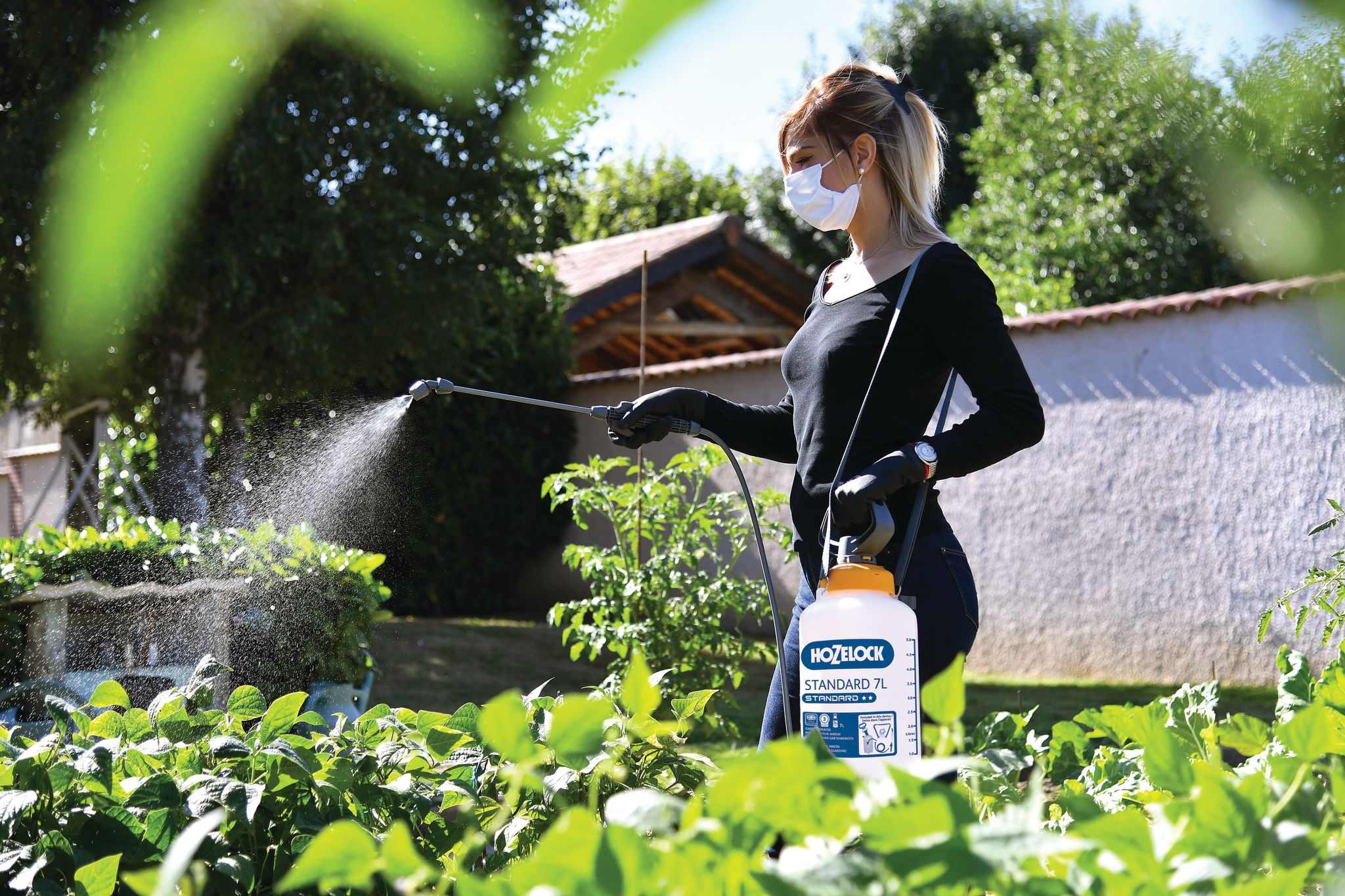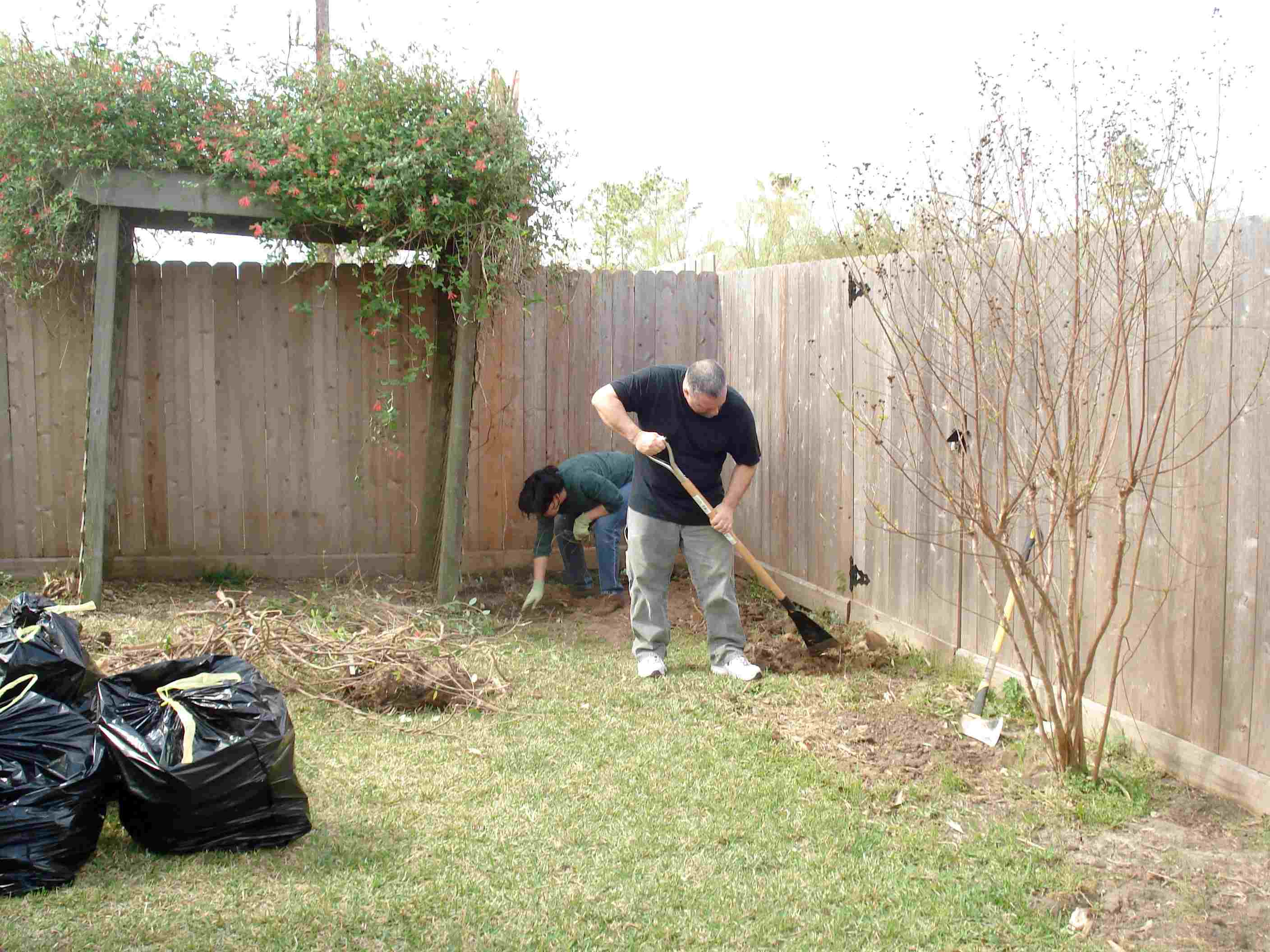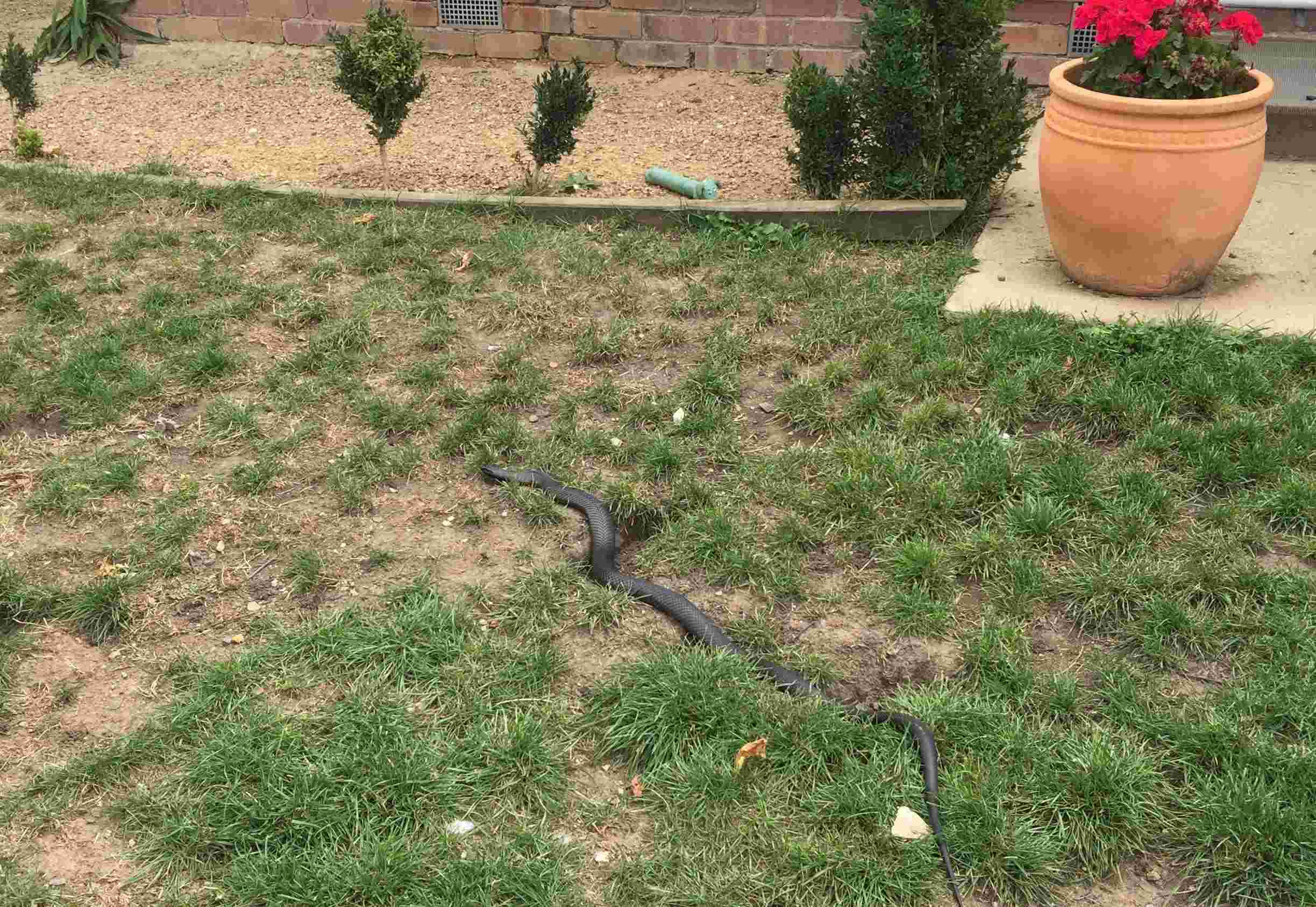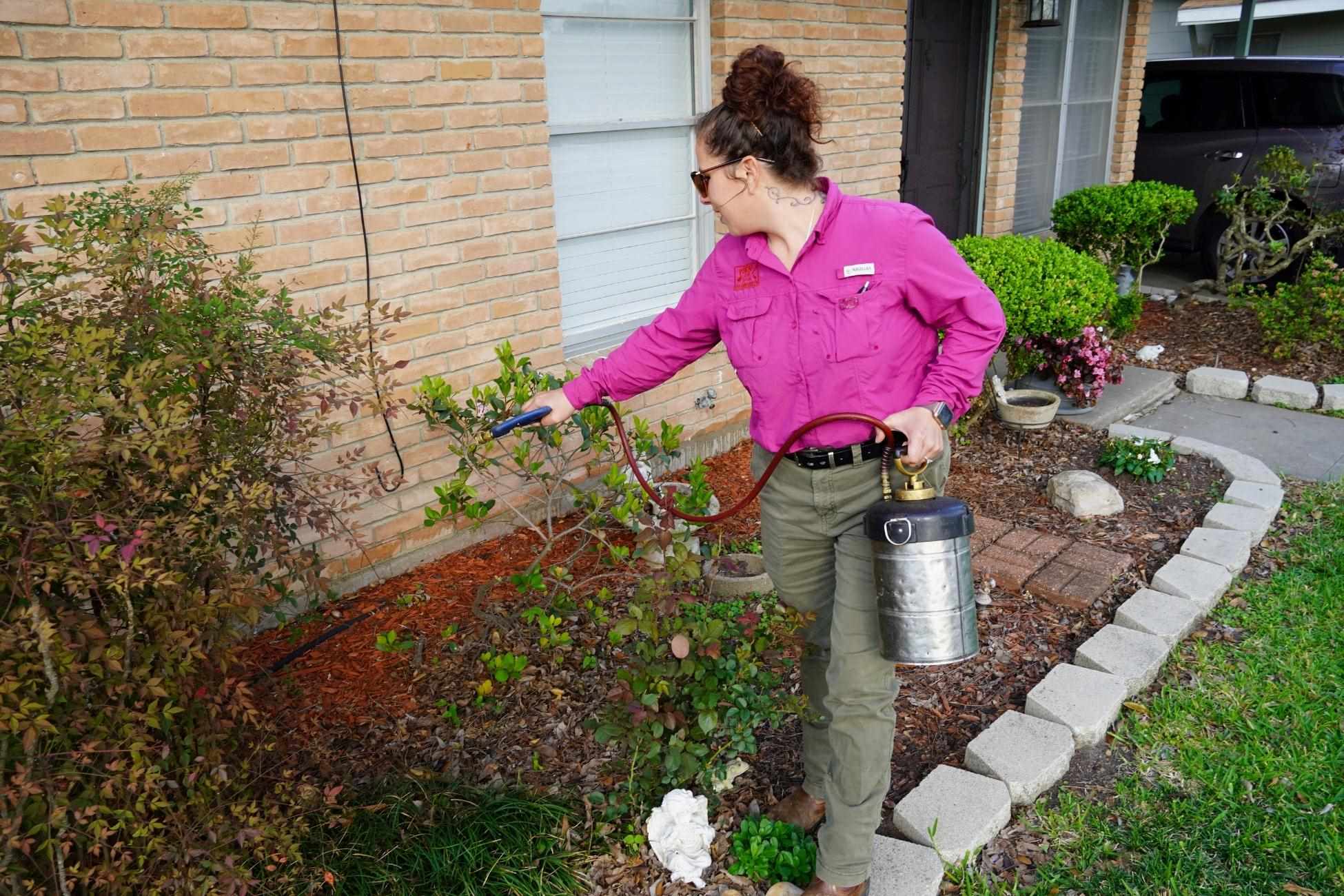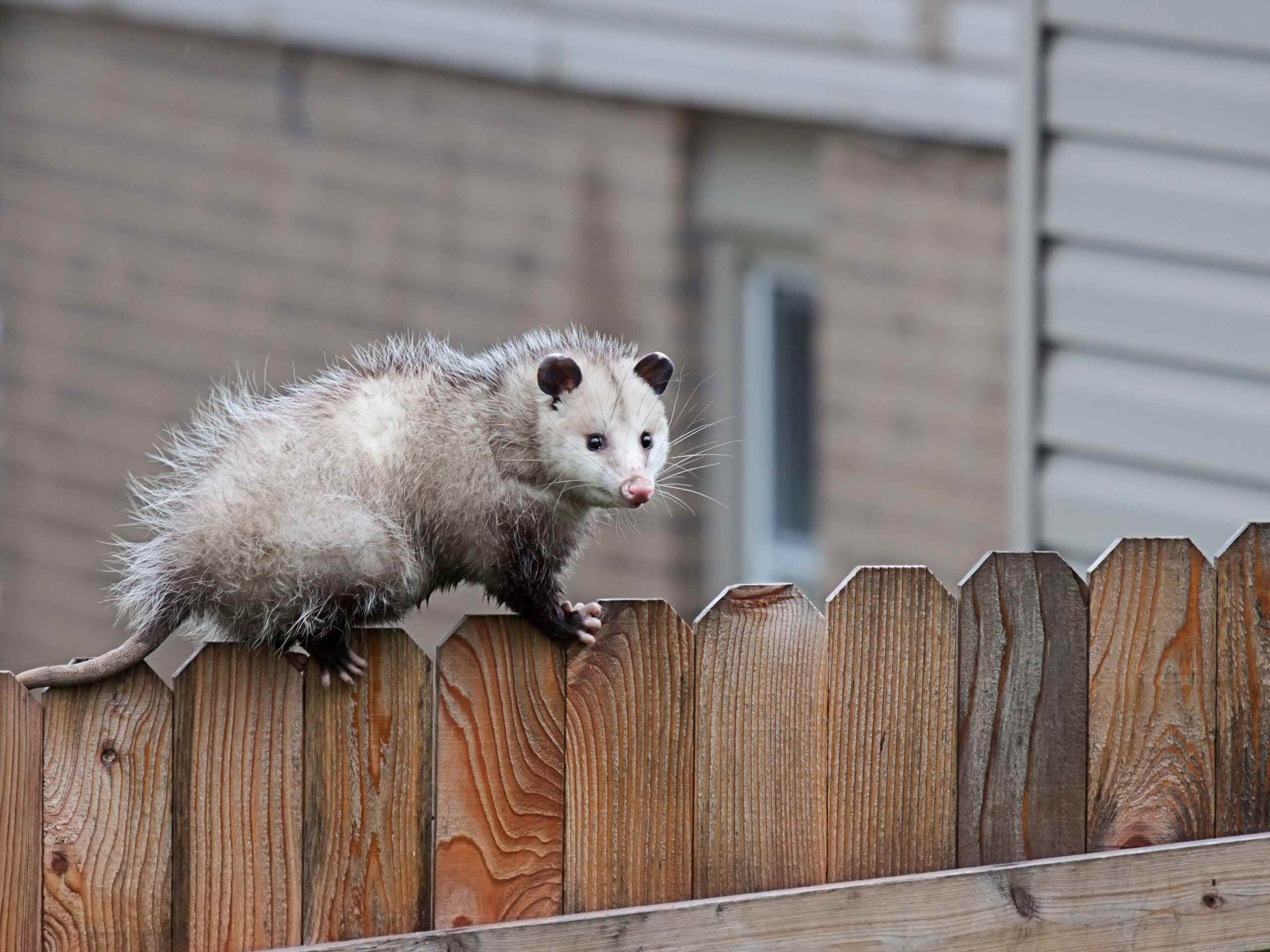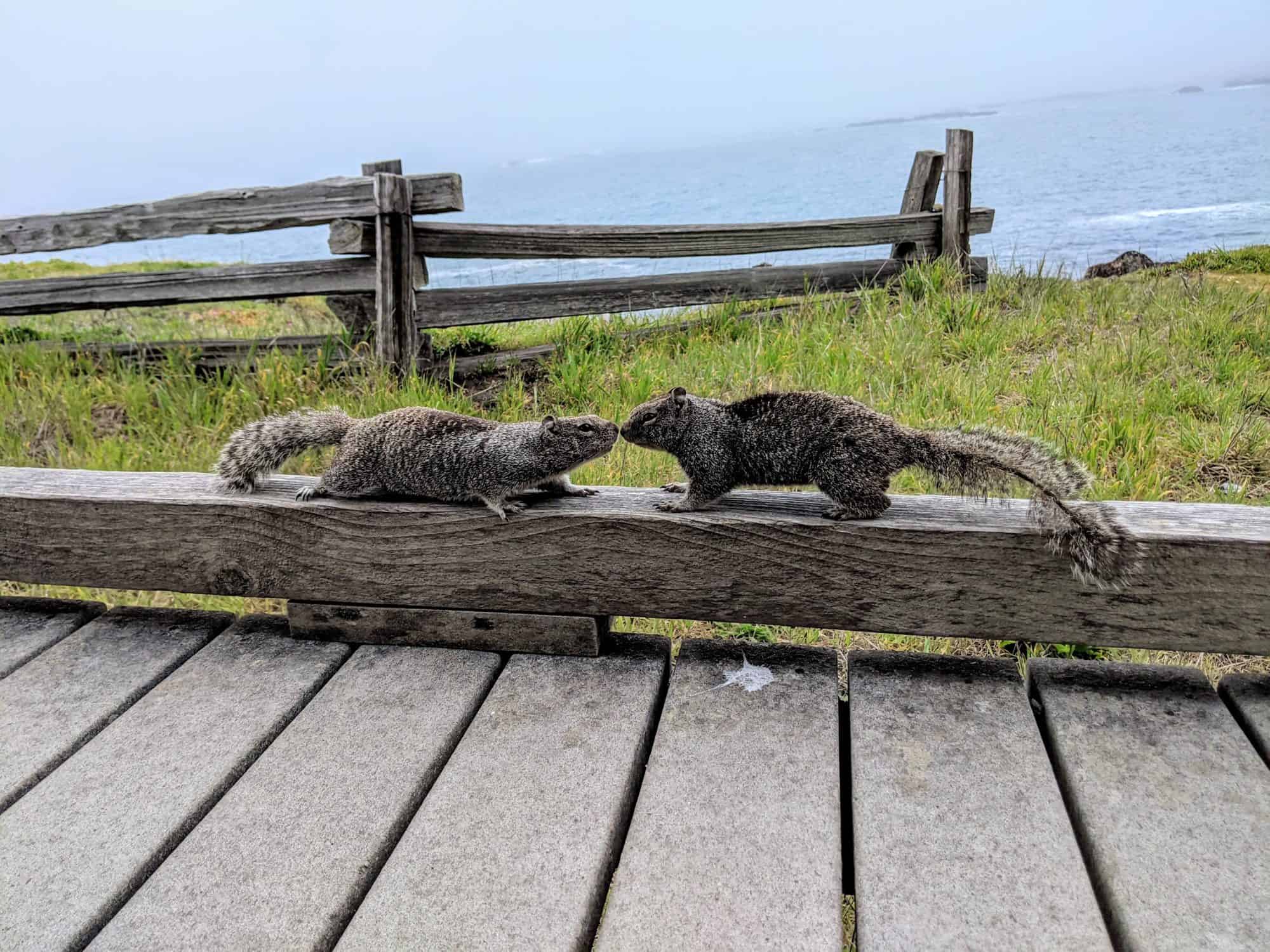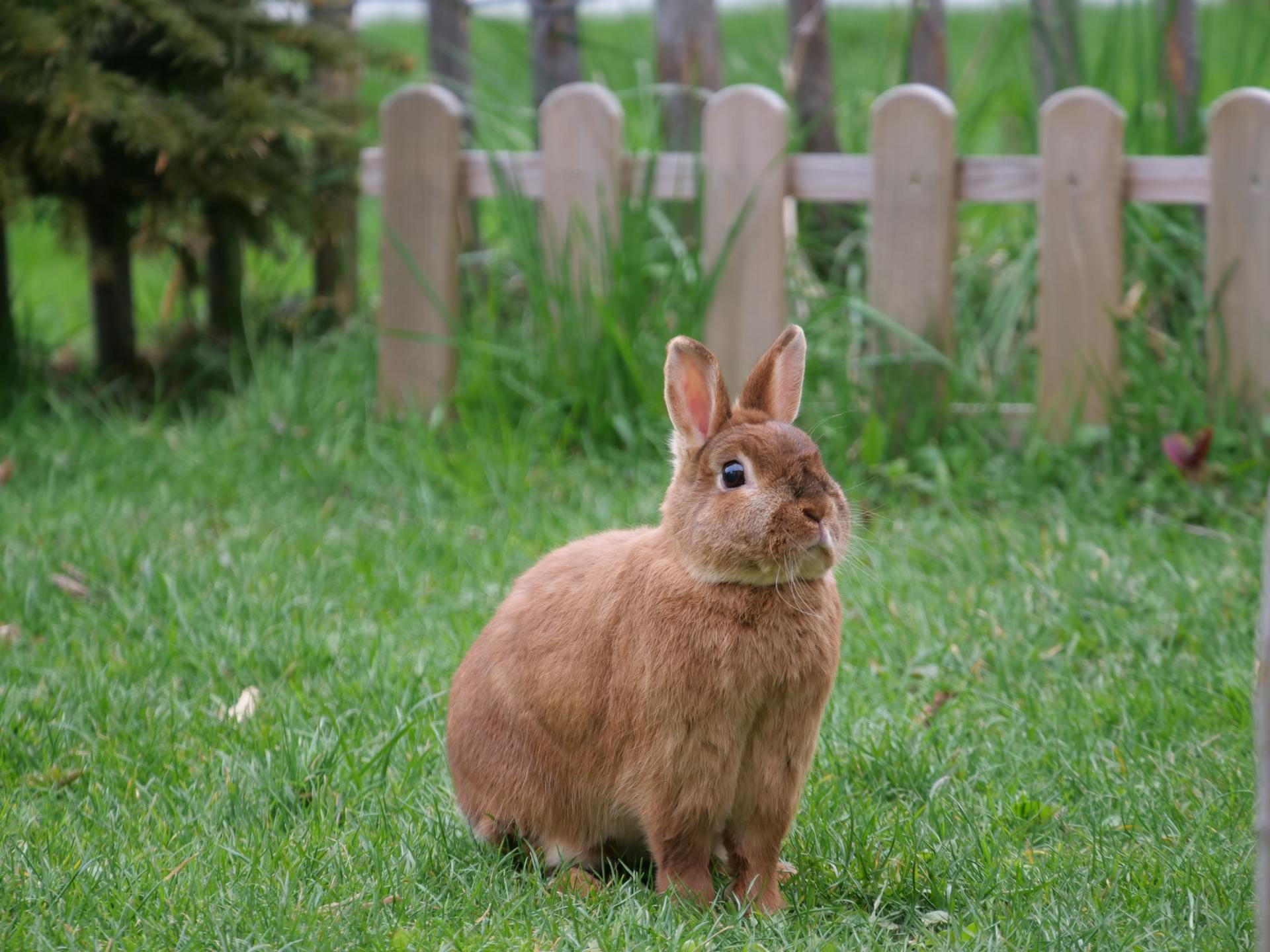Home>Gardening Tips and Tricks>How To Get Rid Of Bees In The Backyard


Gardening Tips and Tricks
How To Get Rid Of Bees In The Backyard
Published: August 5, 2023
Learn effective problem-solving techniques to safely and efficiently remove bees from your backyard. Find expert tips and advice on getting rid of bees.
(Many of the links in this article redirect to a specific reviewed product. Your purchase of these products through affiliate links helps to generate commission for Chicagolandgardening.com, at no extra cost. Learn more)
Table of Contents
Introduction
Welcome to our comprehensive guide on how to get rid of bees in your backyard. Bees are incredible creatures that play a vital role in pollination and the overall health of our ecosystem. However, it’s understandable that having a beehive in your backyard can be a concern for some people, especially if you or your family members are allergic to bee stings. In this article, we will explore different methods to safely and effectively remove bees from your property.
Understanding the behavior of bees is crucial in finding the best approach to deal with them. Bees are highly social insects that tend to form colonies in suitable locations, such as trees, hives, or even cavities in buildings. It’s important to note that bees generally do not pose a threat unless they feel their nest or hive is being threatened. Remember, they are just trying to protect their home.
Identifying the species of bees in your backyard is essential because different species may require different removal methods. The most common bee species you may encounter are honeybees, bumblebees, carpenter bees, and wasps, each with distinct characteristics and habits.
There are several reasons why you might want to remove bees from your backyard. Aside from concerns about safety, bees can cause structural damage to your property if they choose to build their nests in or around your home. Additionally, the constant presence of bees can make it difficult to enjoy outdoor activities or even use your backyard freely, especially if someone in your household is allergic to bee stings.
Prioritizing safety is crucial when dealing with bees. Remember, bees are generally not aggressive unless provoked. However, if you attempt removal without proper knowledge or protective gear, you may unknowingly escalate the situation and increase the risk of getting stung. Taking safety precautions and understanding the behavior of bees will significantly reduce the chances of any unwanted incidents.
Ready to say goodbye to the bees in your backyard? In the following sections, we will explore natural methods that can help deter bees, as well as the option of calling a professional beekeeper or consulting with pest control services to safely and effectively remove bees from your property. Let’s dive in!
Understanding Bees
Bees are fascinating creatures that play a crucial role in pollinating flowering plants and helping them reproduce. They are part of the Hymenoptera order, which also includes ants and wasps. Bees are known for their unique ability to collect nectar and pollen, which they use as food for themselves and their larvae. Understanding the behavior and habits of bees can help you better coexist with them and make informed decisions when it comes to bee removal.
Bees are highly social insects that live in colonies, each consisting of a queen, male drones, and female workers. The queen bee is responsible for producing eggs and maintaining the hive’s population, while the male drones mate with the queen. The female worker bees perform various duties, such as foraging for food, building and repairing the hive, and taking care of the larvae.
Bees communicate with each other through a complex system of pheromones and dances. They use pheromones to mark their territory and convey messages to other bees. The dance language, known as the waggle dance, is used to communicate the direction and distance of a food source to other foragers in the colony.
There are different species of bees commonly encountered, each with distinct characteristics and preferences. Honeybees are perhaps the most well-known and domesticated species. They are responsible for producing honey and are crucial for agricultural pollination. Bumblebees, on the other hand, are larger and have a more robust body. They are excellent pollinators and usually build their nests in the ground or in compost piles.
Carpenter bees are known for their ability to create nests by burrowing into wooden structures, such as decks, eaves, and tree trunks. Although they do not consume the wood, their burrowing activities can cause significant damage over time. Lastly, wasps belong to the same order as bees but have distinct characteristics. They tend to be more aggressive and can deliver painful stings, often building nests in protected areas, such as wall voids or under eaves.
Understanding the life cycle and habits of bees can help you assess the situation in your backyard and determine the best approach for their removal. It’s important to remember that bees, in general, are crucial for maintaining the balance of our ecosystems and should only be removed if they pose a significant threat or inconvenience. In the following sections, we will explore various methods to safely and effectively remove bees from your backyard.
Identifying Bee Species
When it comes to bee removal, identifying the species of bees in your backyard is crucial. Different species may have different nesting habits and removal methods. By understanding the characteristics of each species, you can determine the best course of action to safely and effectively remove them.
Honeybees are perhaps the most common species encountered, known for their role in honey production and pollination. They have a slender body covered in fine hairs, typically ranging in color from golden to dark brown. Honeybees live in large colonies and often build their nests in cavities, such as tree hollows or even walls in buildings.
Bumblebees are another commonly observed species. They are larger in size and have a more robust body compared to honeybees. Bumblebees are excellent pollinators, and their nests are usually found in the ground, often in abandoned rodent burrows or compost piles. They are known for their distinctive buzzing sound and vibrant color patterns.
Carpenter bees are solitary bees that can cause structural damage to wooden structures. They have a similar appearance to bumblebees but have a shiny abdomen. Unlike honeybees and bumblebees, carpenter bees do not live in large colonies. Instead, they create nests by burrowing into wooden surfaces, such as decks, eaves, or wooden furniture.
Wasps, while not technically bees, are often mistaken for them due to their similar appearance. They are usually more aggressive and can deliver painful stings. Unlike bees, which feed on nectar and pollen, wasps are predatory insects that primarily hunt other insects. They build nests in protected areas, such as wall voids, attics, or under eaves.
Identifying the species of bees in your backyard can help you determine the appropriate removal method. While honeybees and bumblebees are essential pollinators and should be preserved if possible, carpenter bees and wasps can cause structural damage or pose a threat to humans, requiring removal.
If you are unsure about the species of bees in your backyard or if you are dealing with a potentially dangerous situation, it’s always best to seek professional advice. Local beekeepers or pest control services can help identify the species and provide guidance on the best removal methods to ensure the safety of both humans and bees.
In the next sections, we will discuss different approaches to remove bees from your backyard, considering the specific species and circumstances involved.
Reasons to Remove Bees
While bees are essential for pollination and the health of our ecosystem, there are certain situations where it may be necessary to remove them from your backyard. Here are some common reasons why individuals may opt to remove bees:
- Allergies: Some people have severe allergies to bee stings, which can result in life-threatening reactions. For individuals with known allergies, the presence of bees in the backyard can pose a significant risk.
- Structural Damage: Certain bee species, like carpenter bees, have the habit of burrowing into wooden structures. This can lead to substantial damage to decks, eaves, and other wooden elements of your property.
- Property Enjoyment: Bees, especially when their population is large, can make it challenging to enjoy outdoor activities in your backyard. The constant buzzing and fear of getting stung can make people reluctant to spend time outside.
- Health and Safety: If there are young children, elderly individuals, or family members with medical conditions in your household, the presence of bees can pose a safety risk. Getting stung can be particularly dangerous for these vulnerable individuals.
- Multiple Nests: If there are multiple bee nests in close proximity to each other, it can lead to an increased risk of bee encounters and stings. Removing one nest may not be sufficient in such cases.
- Unmanageable Population: In certain situations, the bee population may become unmanageable for the homeowner. Large colonies can grow rapidly and may require professional assistance to safely remove and relocate.
It is important to emphasize that removing bees from your backyard should only be considered when there is a valid reason and alternative solutions have been explored. Bees play a pivotal role in pollination, benefiting both flowers and crops. Honeybees, in particular, are responsible for a significant portion of agricultural pollination. If possible, it is recommended to contact local beekeepers or organizations that specialize in humane bee removal and relocation.
Next, we will explore important safety precautions to keep in mind when dealing with bees in your backyard. Safety should always be a priority to minimize the risk of stings and ensure a successful removal process.
Safety Precautions
When it comes to dealing with bees, safety should always be a top priority. Bees, although generally not aggressive unless provoked, can sting if they feel their nest or hive is threatened. To minimize the risk of stings and ensure a safe bee removal process, it is essential to take the following precautions:
- Protective Clothing: Wear appropriate protective clothing, such as a beekeeping suit or long-sleeved shirts, long pants, closed-toe shoes, gloves, and a beekeeper’s veil or hat. This will provide a physical barrier between you and the bees, reducing the chances of getting stung.
- Time of Day: Plan your bee removal activities during the late evening or early morning when the bees are less active. Bees are generally more docile during these times and tend to stay close to their nests. Avoid bee removal attempts during the hottest part of the day when bees are most active.
- Do Not Disturb: Avoid making sudden movements or disturbing the bees unnecessarily. Stay calm and move slowly to minimize any aggressive behavior from the bees. Even though you may be apprehensive, it is crucial to remain composed during the removal process.
- Eliminate Strong Scents: Bees are attracted to strong scents, including perfumes, colognes, and scented lotions. Avoid wearing these substances during bee removal activities, as they may agitate the bees and increase the likelihood of stings.
- Keep Children and Pets Away: Ensure that children and pets are kept indoors or at a safe distance from the area where the bee removal is taking place. This will reduce the risk of accidental encounters and stings.
- Seek Professional Help: If you are unsure about how to safely remove bees or if the bee infestation seems too large or complicated to handle on your own, it is best to seek professional assistance. Experienced beekeepers or pest control services have the necessary knowledge and equipment to remove bees safely and effectively.
Remember, bee removal should only be attempted if absolutely necessary and if there are no other viable alternatives. Whenever possible, it is advisable to contact professional beekeepers who can relocate the bees to a safer location.
In the next sections, we will explore natural methods to deter bees from your backyard and discuss the option of calling a professional beekeeper or consulting with pest control services for their removal.
Natural Methods to Deter Bees
If you’re dealing with bees in your backyard and prefer to avoid removing them, there are natural methods you can try to deter them. These methods aim to create an environment that is less appealing to bees, encouraging them to relocate on their own. Here are some natural ways to deter bees from your backyard:
- Remove Food Sources: Bees are attracted to sources of nectar and pollen. Remove or relocate any flowering plants or trees that may be a significant attraction for bees. This can help reduce their interest in your backyard.
- Limit Water Sources: Bees need water to survive, so limiting access to water can discourage them from staying in your backyard. Fix any leaks or standing water sources and keep birdbaths or water features covered when not in use.
- Use Bee-Repelling Plants: Planting specific types of plants known to repel bees can help deter them from your backyard. Some examples include marigolds, mint, citronella, and eucalyptus. These plants have strong scents that bees find less appealing.
- Keep Trash Sealed: Bees are attracted to sugary substances, so be sure to keep your trash cans tightly sealed to prevent them from being attracted to any discarded food or sweet items.
- Seal Potential Nesting Sites: Inspect your property for any potential nesting sites, such as tree cavities, gaps in walls, or holes in the ground. Seal these areas to prevent bees from establishing their nests.
- Use Bee Decoys: Installing bee decoys or fake nests in your backyard can trick bees into thinking the area is already occupied. This might discourage them from building their nests nearby.
- Try Natural Bee Repellents: Some natural substances are known to repel bees. Peppermint or cinnamon oil, diluted with water and sprayed around the area, can deter bees temporarily.
It’s important to note that these methods may not guarantee complete removal of bees from your backyard, especially if there is an established colony or hive. If the bee problem persists or if you are uncertain about implementing these techniques, it is advisable to consult with a professional beekeeper or pest control service for guidance and assistance.
While these natural methods can help deter bees, it is crucial to remember the importance of bees to our ecosystem. Bees play a crucial role in pollination and the production of food. Whenever possible, it is recommended to coexist with bees and explore alternative removal options that prioritize their preservation, such as relocating them to a safer location.
Next, we will discuss the option of calling a professional beekeeper or consulting with pest control services if natural methods are not suitable or effective for your specific bee situation.
Calling a Professional Beekeeper
If you have bees in your backyard and want to ensure their safe removal while preserving their population, calling a professional beekeeper is a viable option. Beekeepers are experienced in handling bees and have the skills and equipment necessary to remove them safely. Here are some reasons why you might consider calling a professional beekeeper:
- Expertise: Beekeepers have specialized knowledge and experience in bee behavior and removal techniques. They can accurately identify the species of bees, assess the situation, and determine the best course of action for removal.
- Humane Removal: Beekeepers focus on the preservation and conservation of bees. They utilize methods that prioritize the safe removal of bees without causing harm to the colony. This may involve relocating the bees to a more suitable location where they can thrive.
- Protection: Professional beekeepers come equipped with the necessary protective gear to ensure their safety during the removal process. This minimizes the risk of stings and potential allergic reactions.
- Experience in Handling Colonies: Beekeepers are skilled in handling and managing bee colonies. They understand how to safely separate the bees from their nests or hives and relocate them without causing unnecessary stress or harm.
- Educational Opportunities: Engaging a professional beekeeper provides an opportunity to learn more about bees, their importance in pollination, and how to coexist with them. This knowledge can help you make informed decisions in the future if you encounter similar situations.
- Follow-Up Support: After the bee removal process, a professional beekeeper can offer advice on how to prevent future bee infestations, such as sealing potential entry points or creating bee-friendly habitats in your backyard.
When selecting a professional beekeeper, be sure to choose a licensed and reputable individual or organization. Check for any certifications or memberships in beekeeper associations to ensure you are working with a knowledgeable and ethical professional.
Remember, the goal of involving a professional beekeeper is to remove the bees safely while preserving their population and promoting their well-being. This approach is especially suitable if the bee infestation is significant, if you are uncertain about handling the removal process yourself, or if you want to contribute to the conservation of bees.
In the next section, we will discuss the option of consulting with pest control services for bee removal, particularly in situations where the bees pose a significant threat or natural methods have proven ineffective.
Consulting with Pest Control Services
If you are dealing with a bee infestation that poses a significant threat or if natural methods and beekeepers have not been successful in resolving the issue, it may be necessary to consult with professional pest control services. Pest control companies have the expertise and tools to handle various pest problems, including bee removal. Here are some important considerations when consulting with pest control services:
- Assessment and Identification: Pest control professionals will assess the situation and identify the species of bees present in your backyard. This identification is crucial in determining the appropriate removal methods and ensuring that legal and ethical guidelines are followed.
- Safe Removal Techniques: Pest control services have specialized equipment and techniques to safely remove bees. They can employ methods such as trapping or vacuuming the bees and relocating them to a more suitable habitat. These methods prioritize the removal of bees while minimizing harm.
- Structural Repairs: Depending on the bee infestation, pest control services may offer structural repairs to fix any damage caused by the bees. This can include repairing wooden structures or sealing entry points to prevent future infestations.
- Follow-Up Visits: In some cases, pest control services may provide follow-up visits to ensure that the bee infestation has been fully resolved. This allows for ongoing monitoring and potential preventive measures to be implemented.
- Legal Compliance: Professional pest control companies are well-versed in local and state regulations regarding bee removal. They will ensure that the removal process is carried out in accordance with these laws, preventing any legal complications.
- Communication and Education: Pest control professionals can provide valuable information about bee behavior and prevention strategies. They can also educate you about alternative pollinators and sustainable gardening practices to maintain a healthy outdoor environment.
When choosing a pest control service, it is vital to select a reputable and licensed company with experience in bee removal. Look for companies that prioritize the safe removal and relocation of bees rather than extermination. Opting for eco-friendly pest control options and asking about their ethical practices can help ensure a responsible approach to bee removal.
While consulting with pest control services should be a last resort, it may be necessary for cases where the bee infestation poses a significant risk to human health or when other methods have proven ineffective. Remember, the aim is to prioritize the safety of both humans and bees while resolving the issue.
In the final section, we will summarize the key points discussed in this guide and provide some closing thoughts on bee removal in your backyard.
Conclusion
Dealing with bees in your backyard can be a challenging situation, but with the right approach, it can be resolved safely and effectively. In this comprehensive guide, we have explored various methods to get rid of bees, considering factors such as safety, preservation of bee populations, and the specific circumstances of your situation.
We began by emphasizing the importance of understanding bees and their behavior. By identifying the species of bees in your backyard, you can determine the most appropriate removal methods. While some bee species, like honeybees and bumblebees, are essential pollinators and should be preserved, others, such as carpenter bees and wasps, may require removal due to their potential for structural damage or safety risks.
Multiple reasons may warrant the need to remove bees from your property. Allergies, structural damage, property enjoyment, and health concerns are among the common factors that prompt individuals to address the presence of bees in their backyard.
Regardless of the removal method you choose, ensuring safety is paramount. We discussed important safety precautions, such as wearing protective clothing, choosing the right time of day for removal, and avoiding disturbances that may provoke bees.
If you prefer a non-intrusive approach, natural methods to deter bees can be effective. From removing food and water sources to using bee-repelling plants, these techniques create an environment that is less appealing to bees.
In situations where professional assistance is required, calling a beekeeper or consulting with pest control services can provide the expertise needed for safe bee removal. Beekeepers can ensure the preservation of bees while relocating them to a more suitable habitat, while pest control services have the necessary tools and knowledge to handle a challenging infestation.
It is essential to remember the significance of bees in our ecosystem and to prioritize their preservation whenever possible. Enhancing awareness about the importance of bees and promoting sustainable gardening practices can foster a harmonious coexistence with these essential pollinators.
If you find yourself facing a bee infestation, we recommend considering the specific circumstances and available options to determine the most suitable approach for your situation. Whether you choose to deter bees naturally, consult with a professional, or rely on pest control, always prioritize safety and the well-being of both humans and bees.
By following the guidelines outlined in this guide and seeking appropriate assistance when needed, you can effectively address bee infestations in your backyard, enabling you to enjoy a safe and comfortable outdoor environment once again.
